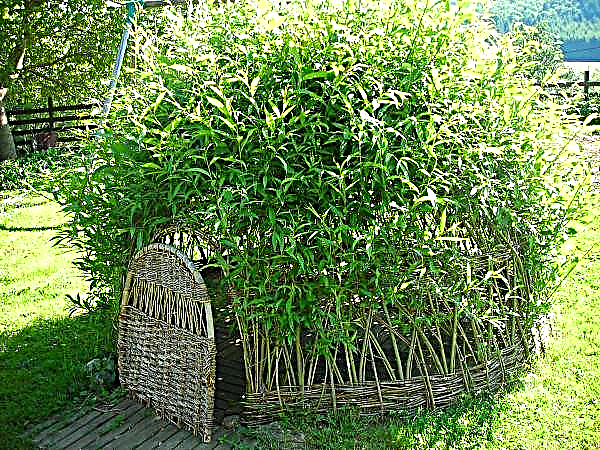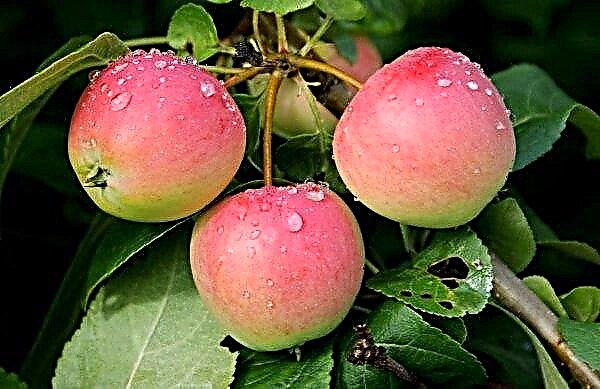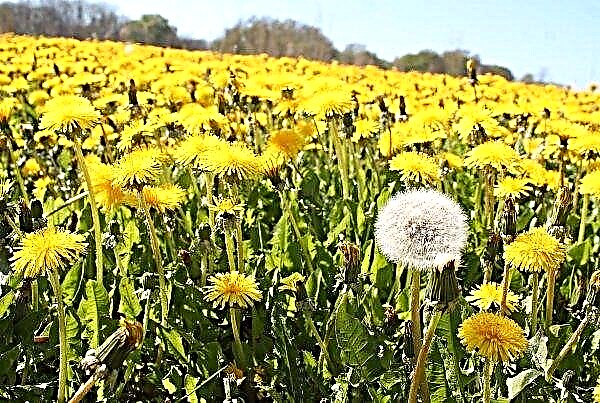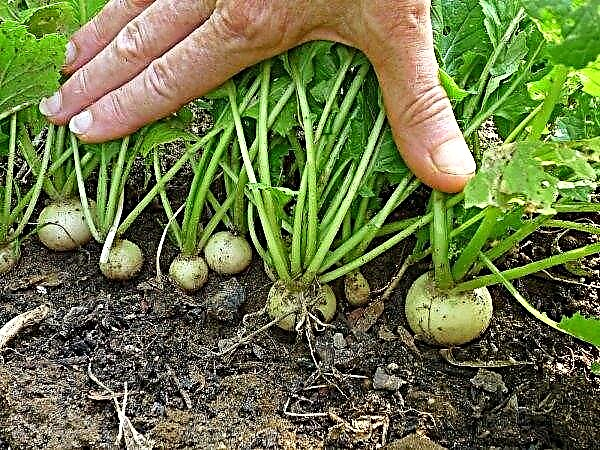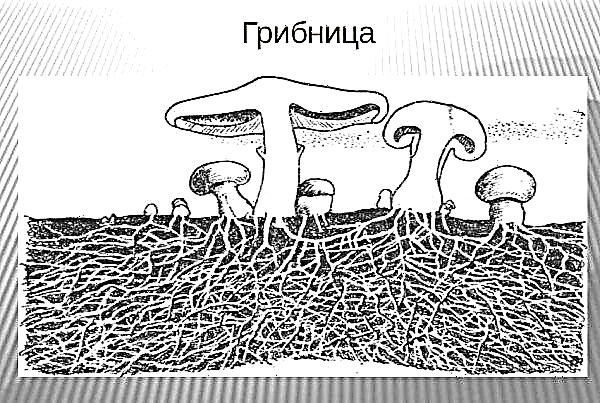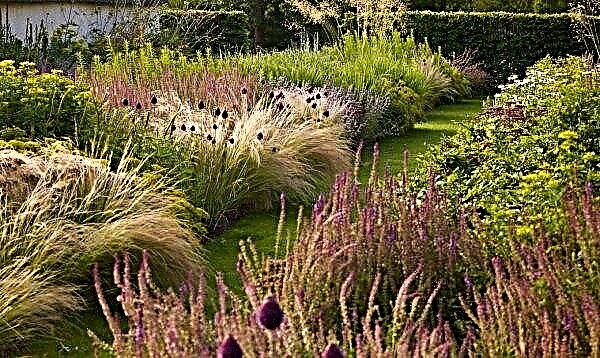Larch is a strange coniferous tree that discards foliage every year. Almost all parts of this plant are used in alternative medicine to treat respiratory diseases. Additionally, the presence of a tree in the garden makes the air fresh and healing. How to grow larch from seeds on your site and what care measures to apply will be described later.
Is it possible to grow larch from a cone?
In the environment of natural growth, larch multiplies by the penetration of seeds into the nutrient soil. Under favorable conditions, they successfully germinate and grow into the original tree with soft needles. Using this property, you can successfully grow larch from a cone at home. In this case, a number of conditions have to be observed.
What do larch seeds look like?
The cones of a unique coniferous tree ripen in autumn. After the seeds are showered, they may sag on the branches for another 2-3 years. Larch seeds are round, light brown, 3-4 mm long. On the edges there are small "wings". Often they are unfertilized and incapable of germination.
When and where to collect larch cones for planting
Larch seed ripens in the fall, in the second half of October, and the cones open a little later. If the purpose of the collection is to propagate the tree, take only fresh fruits with tightly pressed scales. Old materials are best avoided. Young specimens are determined by shape and color, with age, the bump darkens.
Important! Gather seeds until they begin to spill out of the cone.
The collected material is placed in a cardboard container and left for 3-4 days in a warm room. There, the fruits will dry out, and the scales will open. So the seeds will be easier to get. The extracted seed is wrapped in a paper bag and stored until sowing time.
How to plant larch
For germination, you need to take only high-quality seeds (calibrated). Do this in this way: the material is lowered into a container with water and left for two days. Good seeds will fall, and unfertilized seeds will float to the surface.
Did you know? Larch trees are long-lived trees. They can grow 500-600 years.
Seed Stratification
Larch seed can hatch without stratification, but this procedure increases the percentage of germination and the rate of germination. Seeds for 24 hours are dipped in clean water at room temperature and mixed with sand (1: 3). Pour the mixture into a container, wrap with gauze, make small holes.
The container is placed in the refrigerator. The seed must not be placed in the freezer - it will not germinate. After 2-3 months, the seeds begin to hatch.
Soil for larch
Growing a tree in unsuitable soil will always end in failure, so you need to take care of the substrate first. A sandstone or poor land plant does not tolerate. And with deep drainage and rich in organic matter soil, larch grows well and forms a powerful rhizome. If the soil at the proposed planting site is acidic, then the area is lime (lime, dolomite powder). Humus and compost are also added to the soil.
For seed germination, a substrate is prepared:
- peat - 10 kg;
- crushed chalk - 40 g;
- sand - 3 kg.

When to plant
It is advisable to plant larch in April, but no later than the first half of May. It is forbidden to plant seeds in the area where potatoes used to grow - seedlings may suffer from Fusarium infection.
Seed planting
Before planting, a container is prepared, drainage is laid at the bottom with a layer of 2 cm (expanded clay, crushed stones). Then the container is filled with a substrate and moistened. In the middle, make a hole with a depth of 1.5–2 cm and lay the seed there. The distance between the seedlings is 10-15 cm. They cover everything with peat and sawdust. In the end, they create greenhouse conditions for seedlings: they cover it with glass or film.
Seedling care
Shoots appear in 10-14 days, then you can remove the shelter. The main condition for their development is the presence of good light. At first, after planting, the soil is moistened through a pallet. The procedure is carried out as the soil dries.
Since conifers (pine, spruce) are susceptible to fungal diseases, the soil and seedlings are periodically treated with fungicidal preparations. Once the seedlings have needles, you can begin hardening. In warm time they are carried out to unprotected air. When cold weather occurs, containers are brought into the room.Important! When growing, you need to make sure that condensation does not appear. In such an environment, mold and black leg develop.
 Over the summer, sprouts grow up to 30–40 cm. If the sprouts have grown small and poorly develop, you should not get rid of them - when diving into separate containers they will grow rapidly.
Over the summer, sprouts grow up to 30–40 cm. If the sprouts have grown small and poorly develop, you should not get rid of them - when diving into separate containers they will grow rapidly.Open transplant
For a permanent place, home larch is transplanted at the age of 1-2 years. You need to plant it in the fall, when the deciduous period passes. It is permissible to plant in the spring, before the swelling of the kidneys. Landing in unprotected soil should take into account the size of the rhizome.
Larch has deep roots. If you plan to plant a standard variety (European, Siberian, etc.), a distance of 2-3 m is left between the seedlings.Like many conifers, larch requires a connection with mushrooms, so when cultivating it is advisable to water the young plants with the water left after washing the mushrooms.Did you know? In Europe, larch was grown for decorative purposes in the second half of the 19th century. And in the east (Japan and China) this tree has been cultivated for over a thousand years.

Before transplanting, dig a hole 50 × 50 cm, fill it with water and allow moisture to absorb well. Next, the sapling with an earthen lump is lowered into the hole and sprinkled with soil. At the end of planting, the trunk circle is covered with a mulch layer of 4-5 cm (peat or sawdust). Apical shoots when landing try not to damage. This can cause the plant to bend.
Care and cultivation after transplantation
To grow larch in your garden, you should make a minimum of effort and observe a number of rules.
Watering
Sufficient moisture is the main condition for good growth and development of the tree. Adult plants do fine without additional watering. They get moisture from the soil and rainfall. Young seedlings need regular watering. Drying of the soil is unacceptable. Dwarf or creeping varieties need a lot of moisture, and standard varieties its excess is poorly tolerated.
Young trees are watered at least once every 7 days. At the same time, no less than a bucket of water is poured under each plant. Watering larch can be watered once a month. Norma - two buckets under each tree.
Important! With a shortage of water, the needles become dull, the pattern is blurry, and the seedling itself looks wilted.
Loosening and mulching
You need to start soil care immediately after planting. The area around the young tree should be cleared of weeds. They can simply deprive the seedling of light and slow down its development.
It is also necessary to mulch the soil. Mulch will help moisture linger and damp weed growth. Good material would be peat, humus or sawdust. They, in addition to protection, will improve the composition of the soil. The mulch layer should be 5 cm.
Pruning
The regular formation of the crown allows you to maintain decorative larch and prevents thickening, which leads to various diseases. Work is carried out with a sharp, disinfected tool. After work, you need to collect all trimmed parts and destroy.
Crown care includes the following types of pruning:
- Sanitary. It is carried out in cases when the plant has undergone diseases. At the same time, dry and injured shoots, as well as parts damaged by mold and moss, are cut off. Also remove the cap on the bark, which appears when improper care.
- Anti-aging. It is carried out in the spring and in the fall. Weakened and diseased shoots are cut off from trees, and old ones are shortened by 1/3. This procedure stimulates the appearance of new branches and returns decorativeness to the tree.
- Formative. Need for young plants. During operation, the crown is given the correct shape. Perform in the early spring, until sap flow begins. When pruning, excess, improperly developing shoots are removed.

Winter preparations
An adult plant does not need shelter for the winter. But in the autumn trunks of young trees are wrapped in burlap. As they grow older, the winter hardiness of the plant will increase.
As you can see, it is not only realistic, but also easy to grow larch from a seed yourself. Only simple maintenance will be required, as well as for many young trees. And correctly planted plants will reach one and a half meter height in 4–5 years.Did you know? The largest larches grow in the Lindulovskaya grove (the village of Roshchino, near Zelenogorsk). Some specimens there reach a height of 40 meters.

